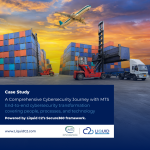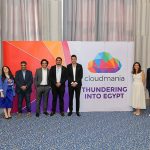Professional Services
AWS
Well-Architected Reviews

AWS Well-Architected Reviews
Liquid C2’s AWS Well-Architected offering provides our customers with a consistent approach to reviewing their workloads against current AWS best practices and gives recommendations on how to remediate any issues identified in their workload architecture.
Optimise your workloads with AWS Well-Architected Reviews
Through our AWS Well-Architected reviews, our customers are proactively evaluating their architectures, identifying areas for improvement, and taking actions to address any identified issues. By continually reviewing architectures, our customers are ensuring that they align with best practices and evolving to meet changing business needs.
To do a review, customers answer a set of questions, choosing answers that match how their business approaches that area. In alignment with the Well-Architected framework, the Well-Architected review groups questions into six pillars – operational efficiency, security, performance efficiency, reliability, cost optimisation and sustainability.
AWS Well-Architected Framework
AWS Well-Architected Framework equips your business with strategies and best practices for architecting in the cloud and making informed decisions regarding your cloud workloads and associated business impacts. It provides a consistent approach to measuring your architecture against AWS best practices and identifying how to address any shortcomings.
The pillars of the Well-Architected framework include:
Reinforce your organisation’s commitment to build workloads correctly while consistently delivering a great customer experience by adopting best practices for your cloud operations including incident management, change management, and resource provisioning.
The operational excellence pillar focuses on your ability to run and monitor systems to deliver business value and to continually improve supporting processes and procedures. It emphasizes the benefits of automation, efficient resource utilization, and the use of operational metrics to drive decision-making.
- Drive automation in your cloud operations to reduce level of effort required to make changes and reduce risk by adopting standard of making frequent, small and reversible changes.
- Gain business and operational insights by architecting for insights into the health of your workloads and the success metrics of your cloud operations.
- Evaluate cloud operational readiness of both your workload and team.
- Prepare for and respond to events using runbooks and playbooks.
Security is a fundamental and critical consideration in any architecture. This pillar focuses on embedding security in every layer of your architecture including implementation of strong security measures to protect information, systems, and assets while delivering business value through risk assessments and mitigation strategies.
- Build cloud native architectures with security enabled at all layers and tracing across usage and changes by implementing a strong identity foundation.
- Leverage AWS control methodologies for protection of your infrastructure to meet best practices and industry or regulatory obligations.
- Keep your data confidential while preserving its integrity and availability at rest and in transit.
- Use fine-grained access control to control and manage who can do what.
- Define trust boundaries for your networks and applications.
- Take advantage of managed services to reduce maintenance tasks including patching, hardening while you focus on your core business.
- Use detective controls to detect or identify a security breach and automate resolution procedures.
Reliability pillar speaks to the ability of your workloads to perform their intended function correctly and consistently when they are expected to. It includes the ability to operate and test workloads through their total lifecycle.
To ensure reliability of your workloads, there is a strong focus on resiliency which speaks to:
- Recovering from infrastructure or service disruptions with tested and automatic failure management procedures.
- Dynamically acquiring compute resources to meet demand.
- Mitigating disruptions such as misconfigurations or transient network issues.
To achieve workload resiliency, it is critical to identify foundational elements around setup and cross-project requirements, make architectural design choices aimed at prevention and mitigation of failures, and adopt effective change management policies to deliver positive outcomes for your business.
Performance efficiency focuses on your ability to use computing resources efficiently to meet system requirements, and to maintain that efficiency as demand changes as technologies evolve.
This pillar focuses on key performance factors including:
- Selecting the right resource type for your workloads including computing, storage, and databases.
- Optimizing your workload selections as AWS continues to innovate with new resource types and features.
- Performance monitoring and leveraging of AWS automation tools to resolve any performance issues.
- Adoption of best practices in making architectural trade-offs to maximise performance efficiency.
Cost optimisation focuses on designing architectures that deliver business value at the lowest possible price point. Key focus areas include:
- Cloud financial management – realise business value and financial success as you monitor, visualise and optimise your AWS costs and usage.
- Control and understand where your money is being spent with expenditure and usage awareness by leveraging AWS cost and usage monitoring and reporting tools.
- Select cost-effective resource types and appropriate pricing models to effectively manage costs.
- Manage demand and supply with the right size of resources using services such as autoscaling, caching or queueing.
- Optimise your workloads over time by taking advantage of new services or features.
- Align to or establish sustainability goals for your workloads. For each cloud workload, establish long-term sustainability goals such as reducing the compute and storage resources required per transaction.
- Model the return on investment of sustainability improvements for existing workloads.
- Right-size workloads and implement efficient design to verify high utilisation and maximise the energy efficiency of the underlying hardware.
We wanted to create a digital transformation strategy with a focus on improved communications for a more cohesive hybrid work environment. But, we didn’t know where to start. Liquid C2's Discovery Services helped us assess our current infrastructure to take the right steps towards cloud implementation at a very reasonable price.
A marketing agency in Kenya
Why AWS Well-Architected Reviews?
Speed
Build and deploy applications faster by reducing time spent on troubleshooting, capacity management and by using automation to experiment and reduce time to market.
Mitigate Risks
Understand areas you have gaps in your architecture and address them before they impact your business and distract your team.
Informed Decisions
Ensure you have made active architectural decisions that highlight how they might influence your business outcomes.
Best Practice
Learn AWS best practices learned from reviewing thousands of workloads on AWS cloud.
Maintained
Leverage Liquid C2 professional and managed services to keep your AWS environment up to date.
Funded
Unlock AWS funding in the form of credits to offset your professional services costs in remediating any issues identified from the review, subject to remediation of at least 45% of identified High-Risk Issues (HRIs) and completion of a customer satisfaction survey.
Our approach and what to expect.
Our expert team Solutions Architects, Cloud and Cybersecurity Sales Specialists, and Key Account Managers will walk the journey with your technical and project team to help improve your architectures using proven best practices.
Through this review exercise and based on the answers you provide to the questions; our team will generate a report which will highlight findings including medium and high-risk issues, and measures to take in remediating them, as measured against the Well-Architected framework.
A detailed scope of work including action items will be shared with you after the Well-Architected review has been conducted. Our team will work with you to create a roadmap to get your business to your desired digitally transformed state.
Identify the workloads to review. Complete Liquid Well-Architected Review questionnaire about your current architecture across the six pillars of Well-Architected Framework.
Stakeholders:
- Liquid Solutions Architect
- Liquid Key Account Manager
- Liquid Cloud and Cybersecurity Sales Specialists
- Your technical / project team
Using the AWS Well-Architected tool, we will assess and evaluate your current AWS environment to identify any security vulnerabilities, opportunities for cost savings, improve your workload availability and performance, and overall business outcomes.
We do this with your technical and project team to ensure a holistic view of your workloads and to drive effective communication between relevant stakeholders:
- Liquid Solutions Architect
- Your technical / project team
We work with you to develop an action plan to remediate priority High Risk Issues found from the review.
Stakeholders:
- Liquid Solutions Architect
- Liquid Key Account Manager
- Liquid Cloud and Cybersecurity Sales Specialists
- Your technical / project team
It is recommended to conduct Well-Architected Reviews of your workloads on a continuous basis, especially when you make significant changes to them, keeping in mind that most workloads can be improved.












